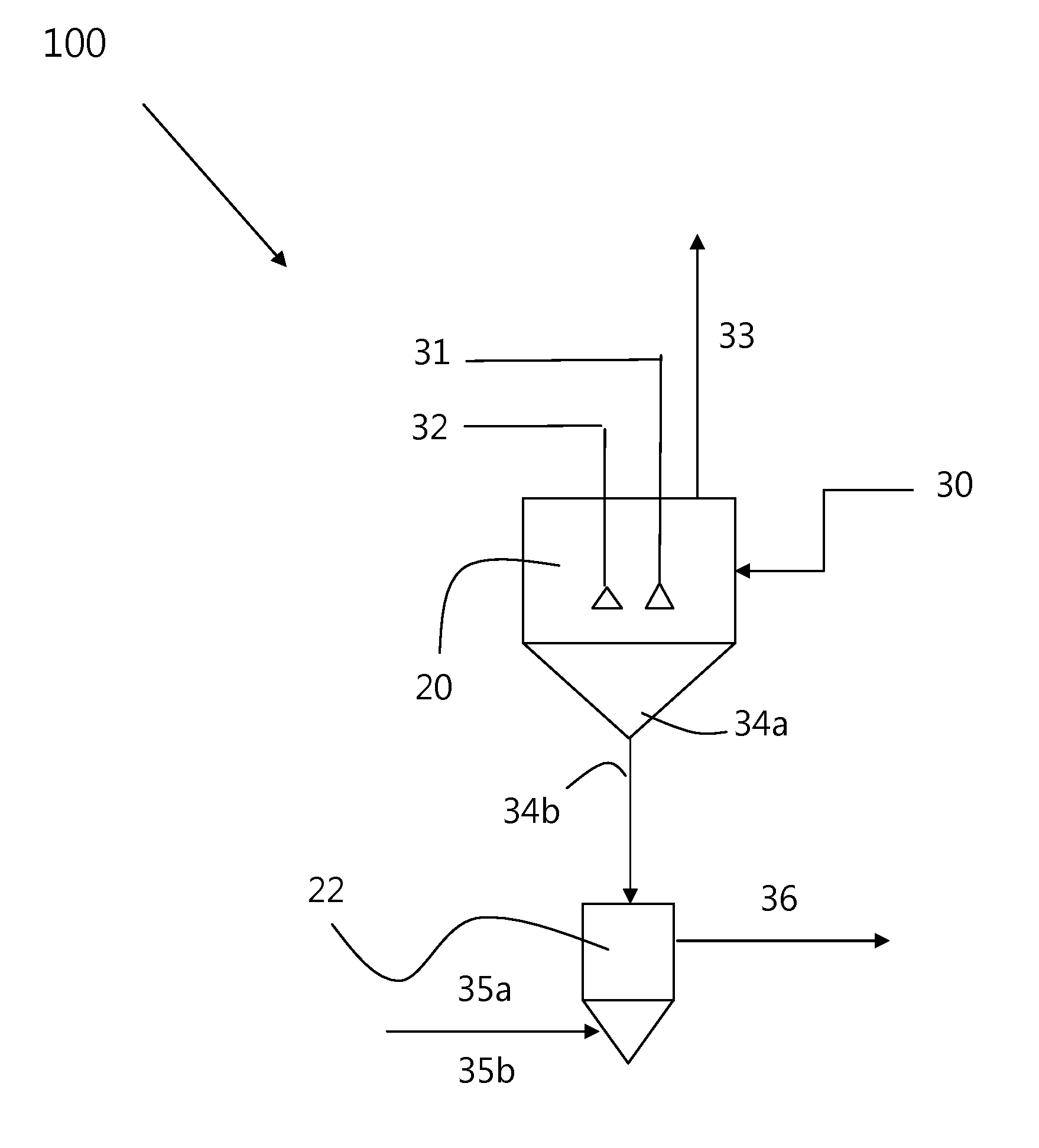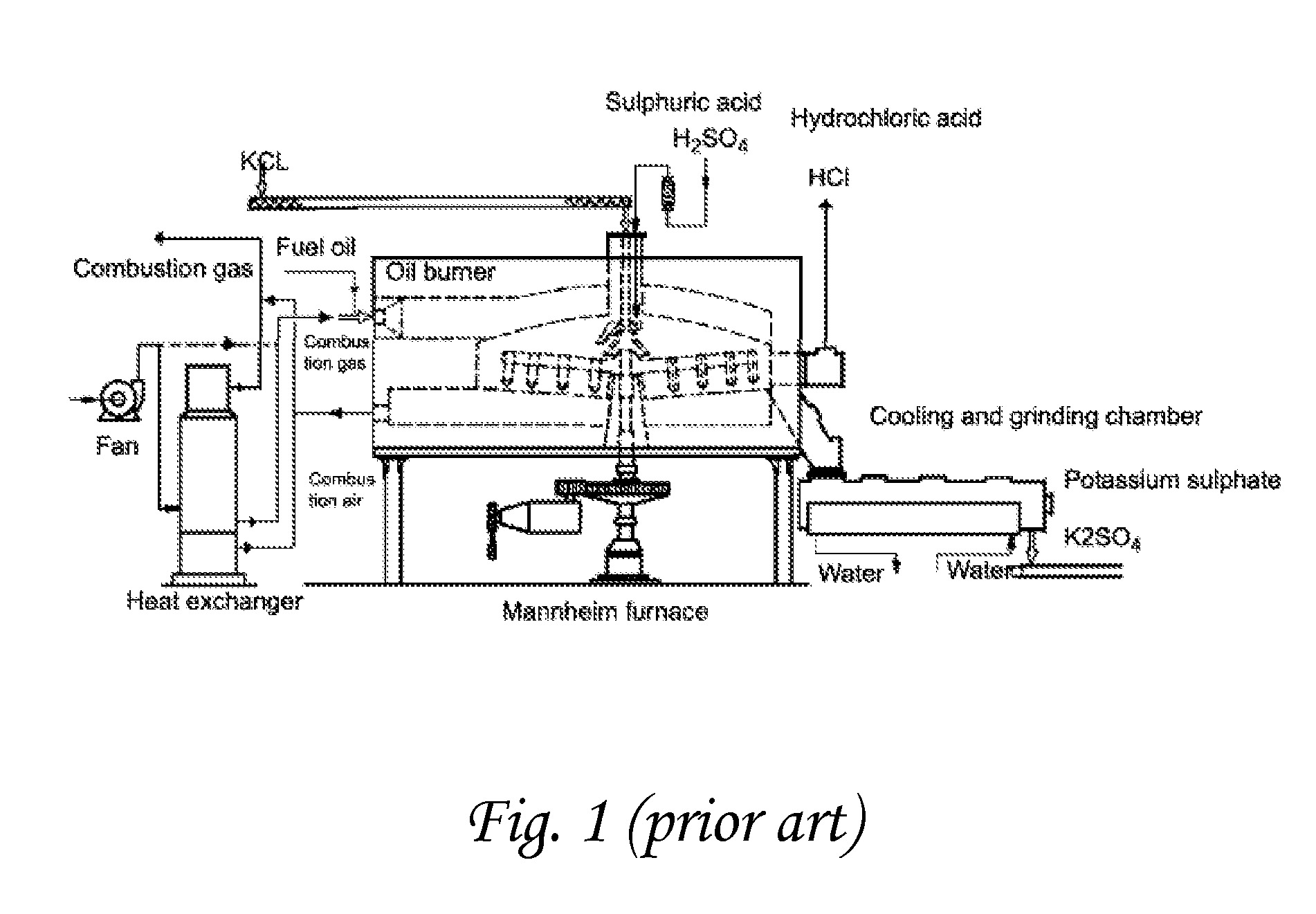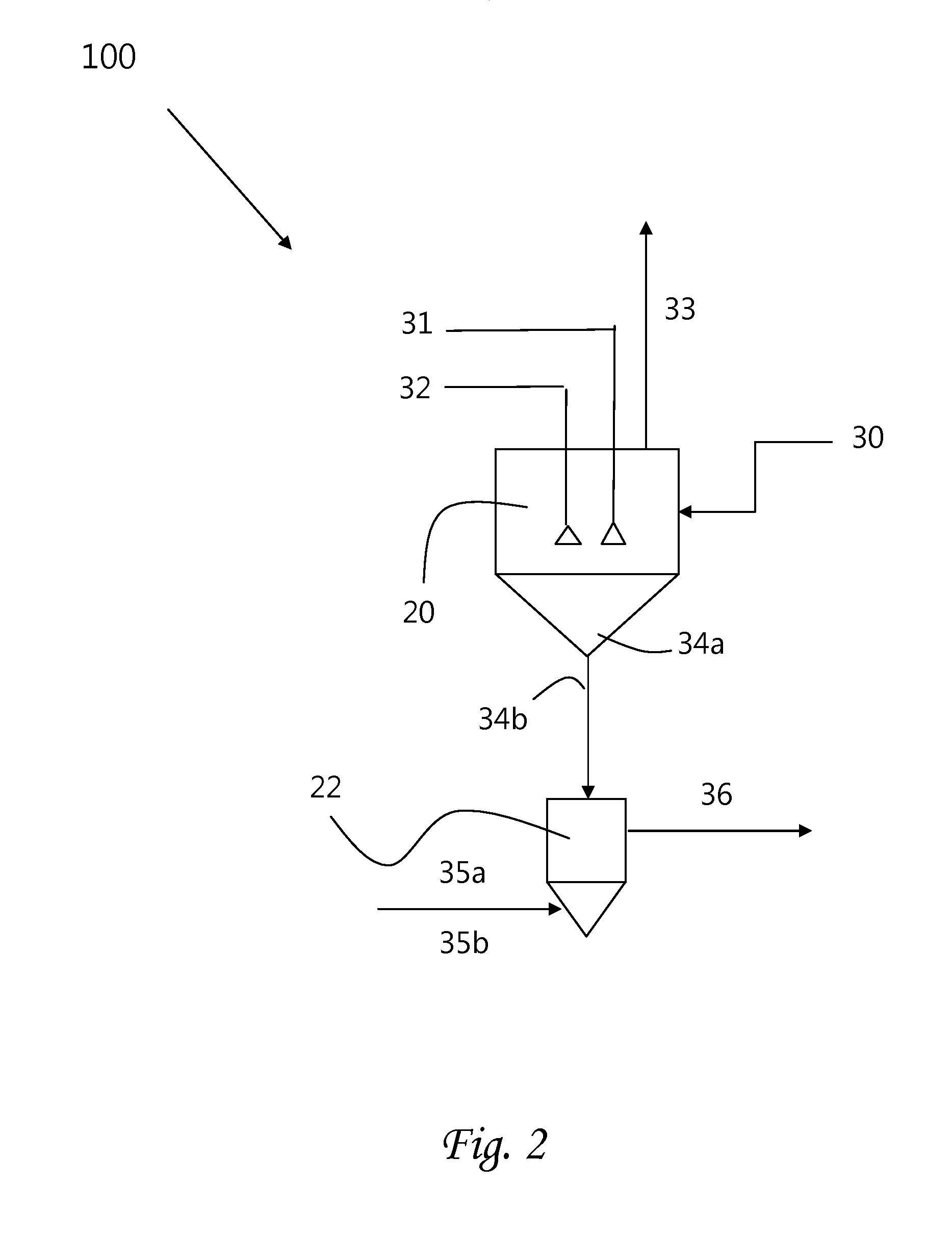Chemical process to produce hydrogen chloride and chloride-free compound potassium sulfate fertilizers or other metal sulfates
a technology of potassium sulfate and chloride-free compound, which is applied in the direction of inorganic chemistry, ammonium sulfate, magnesium/calcium/strontium/barium sulfide/polysulfide, etc., can solve the problems of inefficient mannheim process, inconvenient industrial application, and still energy-intensive process
- Summary
- Abstract
- Description
- Claims
- Application Information
AI Technical Summary
Benefits of technology
Problems solved by technology
Method used
Image
Examples
example 1
[0102]A water-containing liquid, typical of the supernatant liquid remaining after precipitation of a sulfate salt, was prepared by mixing 200 g K2SO4, 200 g H2SO4, and 600 g H2O for 3 hours. 548 g KCl were then dissolved in this water-containing (“supernatant”) liquid.
[0103]673 g of oleum (31% free SO3) was introduced via a pipe into the container containing this solution. HCl discharged from the reaction mixture was dissolved in 520 g H2O; the total weight of the aqueous HCl solution thus obtained was 786 g. The HCl solution was found to contain 32% HCl and 0.5% H2SO4. The sulfate-containing solution obtained from the reaction mixture was then cooled to 35° C., whereupon precipitation of a sulfate-containing salt occurred. The crystals were separated by filtration from the supernatant liquid and then dried for 2 hours at ˜105° C. The weight of the dry crystals was 340 g (44.7% yield). The resulting salt contained 34.2% K, compared with a theoretical value of 37.8% for pure K3H(SO4...
example 2
[0104]100 g of the dry sulfate salt product of the previous example was further washed with 40 g of H2O in order to remove any remaining H2SO4. The solid was filtered under vacuum and then dried for 2 h at ˜105° C. The washing did remove excess H2SO4; the resulting product contained 36.2% K and 16.7% H2SO4.
example 3
[0105]In this experiment, the potassium sulfate double salt was neutralized with aqueous NH3 according to the reaction
K3H(SO4)2+NH4OH→K3(NH4)(SO4)2+H2O
15 g of the washed and dried double salt from Example 2 were mixed for 1 h with 10 g of 25% NH4OH. The precipitate was dried at ˜105° C. for 2 h. The weight of the dry crystals was 15.64 g, and the crystals contained 4.42% N and 34.2% K (as compared to theoretical values of 4.3% N and 35.8% K).
PUM
| Property | Measurement | Unit |
|---|---|---|
| temperature | aaaaa | aaaaa |
| molar ratio | aaaaa | aaaaa |
| molar ratio | aaaaa | aaaaa |
Abstract
Description
Claims
Application Information
 Login to View More
Login to View More - R&D
- Intellectual Property
- Life Sciences
- Materials
- Tech Scout
- Unparalleled Data Quality
- Higher Quality Content
- 60% Fewer Hallucinations
Browse by: Latest US Patents, China's latest patents, Technical Efficacy Thesaurus, Application Domain, Technology Topic, Popular Technical Reports.
© 2025 PatSnap. All rights reserved.Legal|Privacy policy|Modern Slavery Act Transparency Statement|Sitemap|About US| Contact US: help@patsnap.com



